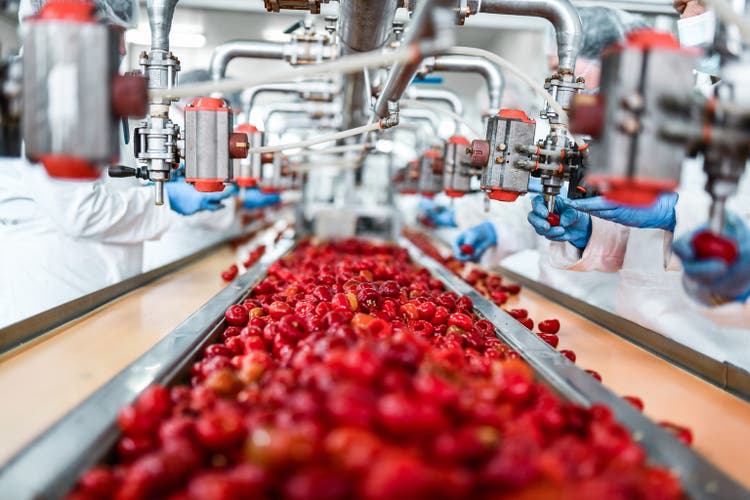AleksandarGeorgiev
~ by Snehasish Chaudhuri, MBA (Finance)
In a market where most stocks are losing value, Invesco DB Agriculture Fund (NYSEARCA:DBA) is one of the exceptions. Price of this commodity exchange traded fund (“ETF”) rose by 11 percent over the past 1 year, and 5 percent during 2022. Since reaching a record low during the COVID-19 pandemic during June 2020, the price rose by 75 percent within the next few years, and then it dropped a little bit. The stock is currently trading at $20.66, almost equal to its net asset value (“NAV”). Currently, the fund has $1.53 billion of assets under management (“AUM”) and has an expense ratio of 0.86 percent.
DBA offers investors a convenient and cost-effective way to invest in commodity futures. But, due to the volatile nature of futures contracts, changes in the market prices of the underlying securities could cause large losses. Moreover, the fund doesn’t pay any dividend, and investors have to solely rely upon the growth of its market price, which again will be determined by the growth in its NAV. This fund is not suitable for every type of investor due to its speculative nature, especially when the markets are volatile.
Invesco DB Agriculture Fund is Better than the Commodity-Linked Notes
Invesco DB Agriculture Fund invests in a blend of commodity futures as well as US Treasury securities, money market funds and Treasury Bill ETFs. For the commodity futures portion, it seeks to track changes, whether positive or negative, in the level of the DBIQ Diversified Agriculture Index Excess Return. That way, this Index reflects the performance of the overall agriculture sector. Investors cannot invest directly in the Index. The Invesco DB Agriculture Fund and the Index are rebalanced and reconstituted annually in November.
This agriculture index is a rules-based index composed of futures contracts on the most widely traded and liquid agriculture commodities. Almost half of Invesco DB Agriculture Fund’s investments are made in future contracts on corn (6.87 percent), soybeans (6.86 percent), coffee (6.06 percent), live cattle (5.67 percent), sugar (5.44 percent), cocoa (4.66 percent), lean hogs (4.36 percent), hard red winter wheat (3.45 percent), soft red winter wheat (3.27 percent), feeder cattle (1.85 percent), and cotton (1.31 percent).
Invesco DB Agriculture Fund invests in liquid futures contracts that trade on formal exchanges and thus has certain advantages over investing in physical commodities or conventional commodity indexes. The Fund does not have to incur any cost of storing any physical commodity. It also doesn’t have to bear the cost of entering into a commodity-linked note with a dealer, a cost that is usually much higher than entering into an exchange-traded futures contract. All these enable the fund to operate with a lower cost, which is reflected by its expense ratio.
In order to diversify the risk of investing in commodity futures contracts, this fund invests in US Treasury securities, money market funds and T-Bill ETFs. These investments are highly rated (AAA or AA) and have almost zero default risk. This also enables the fund to earn interest on these securities, and helps in its overall return. Invesco DB Agriculture Fund invests in liquid futures contracts at publicly available prices on regulated futures exchanges. Thus investors gain a more direct and cost-effective exposure to agriculture commodities than while buying commodity-linked notes, which are less liquid and not traded publicly.
Invesco DB Agriculture Fund Seems to be a Risky Fund
As a speculative fund, Invesco DB Agriculture Fund involves a high degree of risk. Investors may lose a substantial amount of money due to the extreme volatility of the future contracts. Thus this fund is not a good option for cumulative wealth creation. Instead, DBA can be considered as a basket of diversified agriculture commodity futures. However, the diversification across different agriculture commodities is not the same as diversification across industries, as it still suffers from unsystematic risk. Unsystematic risk is a type of investment risk that is endemic to an individual asset or a group of asset classes, like commodities, or collateralized mortgage obligations.
Some investors may think that the expected food shortage due to Russia’s invasion of Ukraine may be helpful for this index, as people will buy more and more agricultural commodities in the future in order to secure food supply. This logic, however, has some limitations. Unlike the energy and metals procurements, most governments in this world don’t try to secure agriculture produce by trading on futures. Secondly, most of the commodities in which DBA has invested have little link to Russia or Ukraine. For example, production and supply of coffee, live cattle, sugar, cocoa, feeder cattle, and cotton will hardly be impacted by this foolhardy war.
Bottomline
Theoretically, Invesco DB Agriculture Fund should be helpful in hedging food inflation. Investors also gain a more direct and cost-effective exposure to agriculture commodities than while buying physical commodities or commodity-linked notes. But, these are not the objectives of investors of any commodity ETF. Investors intend to create wealth by investing in ETFs, either through dividend income, or through price gain. Unfortunately, this fund doesn’t pay dividends. On the other hand, the gains are not excessively high or are too speculative, to be able to reimburse for the high level of risks undertaken by the investors.
75 percent growth over a period of 3 years after this fund reached a historical low due to COVID-19 pandemic was primarily a result of growth over an extremely low base. This was perhaps further supported by a speculation of food shortage over the Russian invasion of Ukraine. In fact, the fund has made losses both in the very short term (8 percent over the past 6 months), as well as over the long term (30 percent over the past 10 years). DBA’s investment in totally unrelated products also doesn’t help much, as it doesn’t solve the basic limitations of this fund. The volatile nature of agriculture commodity futures causes enough skepticism for investors looking for steady wealth creation.


Be the first to comment